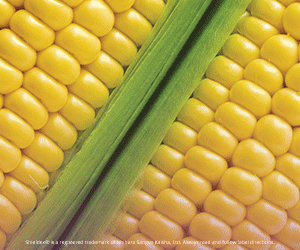Nutrients and micronutrients
THE 4 R’S
many of you have heard of the concept of the 4 R’s of nutrient stewardship. The R’s represent the right fertilizer source at the right rate, at the right time and in the right place.
These principles are critical for economic and sustainable yields in crop farming and apply to the major nutrients [nitrogen (N), phosphorus (P) , potassium (K)], the secondary nutrients [sulphur (S), magnesium (Mg), calcium (Ca)], and also to the micronutrients [zinc (Zn), manganese (Mn), copper(Cu), boron (B), iron (Fe), molybdenum (Mo)]. When the 4 R’s are practiced in farming operations, growers are doing everything they can to produce crops in a safe environmental manner as well. Micronutrients are just as vital to maximizing economic yields as the major and secondary nutrients are, but are only necessary in small quantities for the crop.
the right source
With most of the micronutrients, there are many different sources available that all contain the micronutrient your crop may require. For soil applications with dry granular products the choice is usually between oxides and sulphates.
While oxides tend to be less expensive, generally the availability of the micronutrient is greater with the sulphate forms. When mixing micronutrients with liquid fertilizers for soil applications, EDTA formulations are generally recommended in order to maximize root uptake of the micronutrient. Not all forms of liquid micronutrients mix with every type of liquid fertilizer, thus, care must be taken to only combine compatible materials.
For foliar spraying of micronutrients, close attention must be given to the formula of the chosen micronutrient since some forms can cause damage to the plant tissue and may not be compatible with the crop protection products they are being co-applied with. Some micronutrient products aren’t intended for foliar applications since they may not penetrate plant tissue very well either.
the right rate
It is mentioned previously that micronutrients are only necessary in small quantities for each crop and this makes the ‘rate’ part of the 4 R’s very important. All crops have different demands and responses to each micronutrient. If the application rate is too low, the desired response may not be obtained. Conversely, an over-application of a micronutrient to a crop can cause toxicity and severely damage the plants. Utilizing soil and tissue sampling, reading the product label and working with a Certified Crop Advisor will ensure that the correct rate of micronutrient is chosen for each of your crops. If soil test levels are extremely low for a given micronutrient, growers might utilize a build-up program which would be handled differently than addressing the annual needs of a given crop.
PHOTO: MANGANESE DEFICIENT SOYBEANS.

the right time
Matching the application of the micronutrient with the time the crop requires it most is imperative to maximize the efficiency of these applications.
Certain micronutrients are required early in the growth cycle and should be applied with the starter fertilizer, such as zinc in corn production. Others, such as boron on canola, are sometimes better sprayed foliar on the crop in the early flowering stages to assist with reproductive growth. Boron also moves with water in the soil, therefore heavy rain events can move it away from the root zone. Because of this, many growers have switched from early soil-applied boron to spaying it on the crop closer to the time it is required.
Manganese on soybeans is also generally always applied as a foliar spray in order to have it available to the crop in a form it can use when the soybeans require it. Crop protection products are usually being applied to soybeans at this time enabling a co-application of the nutrient and the pesticide.
the right place
Due to the very small quantities of fertilizer materials being used to supply a crop’s micronutrient needs, placement is very critical. Broadcasting of a granular material to supply one or two pounds per acre of actual micronutrient can result in very poor distribution within the root zone of the crop. Because of this issue, soil applications of micronutrients are usually best applied in a band making them more accessible to roots. For micronutrients that are being foliar applied, water volumes must be high enough to maintain adequate coverage of the plant tissue.
As agriculture pushes yields to higher levels, micronutrients will play a much larger role in maximizing economic returns. All crops have different needs and there is a myriad of different sources of micronutrients available. Work with your Certified Crop Advisor to choose the correct approach and practice the 4R’s in this part of your crop production puzzle.
Ken Brett is a Regional Sales Manager with Alpine Plant Foods in New Hamburg, ON and an Ontario CCA. •
Crop advisors provide advice and council producers in their decision making process. This responsibility requires a good understanding of science, food safety, technology, economics and environment. Crop advisors combine knowledge in these disciplines with their local experience to render sound recommendations.
If you would like to contact a CCA in your area or if you would like contact information for any of the above mentioned CCAs, please contact the CCA office at (519) 669-3350 or visit the website at www.ccaontario.com.







